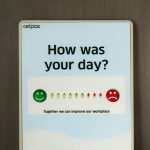
How to position SEO exclusively for an online store
Every website should optimize its positioning. But do you know how to position SEO for an online store? Many e-commerce want to improve their Google ranking and they encounter more hassles than benefits when they start, so we’ll clear them up step by step.
What is SEO for e-commerce?
I want to clarify something that may surprise a few people: there isn’t a specific SEO for online stores, but optimizing for google shopping is very important, you can learn about google shopping ranking factors just like there isn’t Social Media or Email Marketing for e-commerce. The tools, general guidelines, and framework are common to any type of strategy; what varies is how you apply it.
Though there’s no such thing as a specific SEO for online stores, there is optimization for the elements on specific pages and the you can generate enough of an external presence to become relevant and allow our products and categories to appear organically as search results of various search engines.
How to position SEO in an online store
Once we clarify the subject, we can get to the material. Organic optimization always comes in two ways: on-page SEO and off-pay SEO. If we want to position our store, we have to pay a lot of attention to both because the best results are achieved when they’re aligned.
On-Page SEO
As you can imagine, this refers to any action you can carry out at the webpage level to help with tracking and indexing. Search engines use crawlers that scroll through the pages just like a user would and, like them, have a limited time to do so. What do I mean by this? Well, you should make sure:
Make sure that the loading speed is optimal:
- Your server has a fast response time and you don’t share resources with too many domains. Ideally, it would be concentrated and have the data center in your target country.
- Not to make too many requests that would slow down the page loading (CSS style sheets, too many JS plug ins, etc.)
- You’re caching the resources you can to avoid having to load them again and again.
- You focus on the images, one of the most important things in an e-commerce. When they’re poorly optimized, they slow down the load on the entire page. Try using reduction software like io or jpegmini.com. Your users won’t be able to tell the difference visually and the load is greatly reduced.
Take care of the information’s architecture:
- Structure the search logically and keep in mind that each section, product page, and category should work as a landing page that collects the traffic from a search attempt.
- Do keyword research as in-depth as possible. This means a lot of work at the outset, but it’s basic for SEO. If you don’t know which words bring traffic (and conversion) you’re optimizing blindly.
- Watch out for cannibalization, you have to avoid objects that overlap at all costs. For instance, if you have a blog, don’t create a category you can position in place of a transactional page. The goal is to sell.
- Use sitemaps and upload them to Google Search Console. This helps a ton so the robots can track the page without missing what’s important.
- Don’t forget about the breadcrumbs. In online stores, this is basic because they help to establish the hierarchy and relationship between products and categories. They even let you have the product in more than one category with the same URL.
- Pay attention to URLs.Many stores have set them up terribly. Try to have them make sense to the user so they can read them and understand them. Alsoavoid parameters, IDs, and things like that and keep away from words that would confusethe robot like prepositions, articles, underscores, and characters like accents.
Don’t forget about content (and meta-content)
You already know this is critical. Actually, it’s the Achilles heel of many online stores that fall into penalties through algorithms (also known as Panda) and pursue duplicate and low quality content.
- Try to be exclusive and proper. Don’t copy from any page, not even from the manufacturers.
- Boostthe reviews and user-generated content. This brings value from almost any PRISM but it’s especially relevant for SEO.
- Don’t fall short, you have to write (and please make sense). Make in-depth and informative product pages and, of course, don’t forget about categories (which is a recurring error) because they also capture traffic.
- Make a hierarchy using H1 and H2 (at least. If you can use H3, even better). These simple labels help search engines better interpret the content and, visually, it’s more structured for the user.
- Use meta-tags well, like Title and Description. Make sure they contain the keyword, are exclusive, and are within the length restrictions (about 55 characters, or 150 including spaces) and remember to include a call to action that happens when you click the description.
- In addition to low file size, images should incorporate the alt tag to help Google correctly interpret the content.
- Use the robots.txt file to indicate if you want to scroll and index certain pages or not.
- Use the canonical label to avoid indexing contents that are too similar, like one product in several colors, for example.
- Be careful of page labeling that can be a trap for duplicate content since the pages are similar and have little content. List only the first two or three pages and use the relprev andrelnext tags.
- If your store is multi-lingual, use hreflang to tag content by language
The truth is, there are many aspects, but this summary covers the majority of the on-page aspects. I say, it’s a summary with enough elements to go in-depth.
Off-page SEO
This is the second half of the subject. Having a well-organized page and adjusting it, we can start to look for presence.
What do we mean by authority? Rather, what does Google understandas authority? As much as the algorithm has evolved and been able to improve understanding content or indexing speed, there is something that hasn’t changed much and it’s how you view which page has a more relevant keyword: the links.
Each external link received works as a positive signal, link positive signal or it recognizes a domain and specific page. Obviously, the more relevance the linking domain has, the more powerful the recommendations will be.
In the beginning, all links count, but Google, who was eager to debug their algorithm and keep a high relevance in the SERPs or spreadsheets, began to understand that context was key. If your store sells sound equipment, naturally you link manufacturers, blogs, media, forums, and whatever else to be within your niche.
Furthermore, Google has its own link policy, the penguin, that deals with weighting link page’s profiles and is able to understand which have grown artificially. When this occurs, the penalty is harsh.
The links are indispensable and you have to work to get them but follow my advice: observe your competitors, look at their profiles, and keep within their parameters, even if you get ahead. I’m saying you should think about the:
- Number of links
- Percentage of links that do follow (those that are strong)
- Percentage of no-follow links (that don’t go anywhere)
- Links from images
- Percentage of anchor texts branded; texts that you use a hyperlink with, and are of great SEO value.
- Percentage of other anchors, among which: categories, brands, products.
- Links to the home page and in-depth links (categories and product pages)
If you notice, I’m talking about percentages in almost all values because I want you to have more links using this pattern. SEO and by extension, SEO for e-commerce, is a slightly complicated subject that you have tocontinuously learn about. As such, I’d recommend my book. I’ve dedicated all my knowledge on the subject to it, at least up to today.










